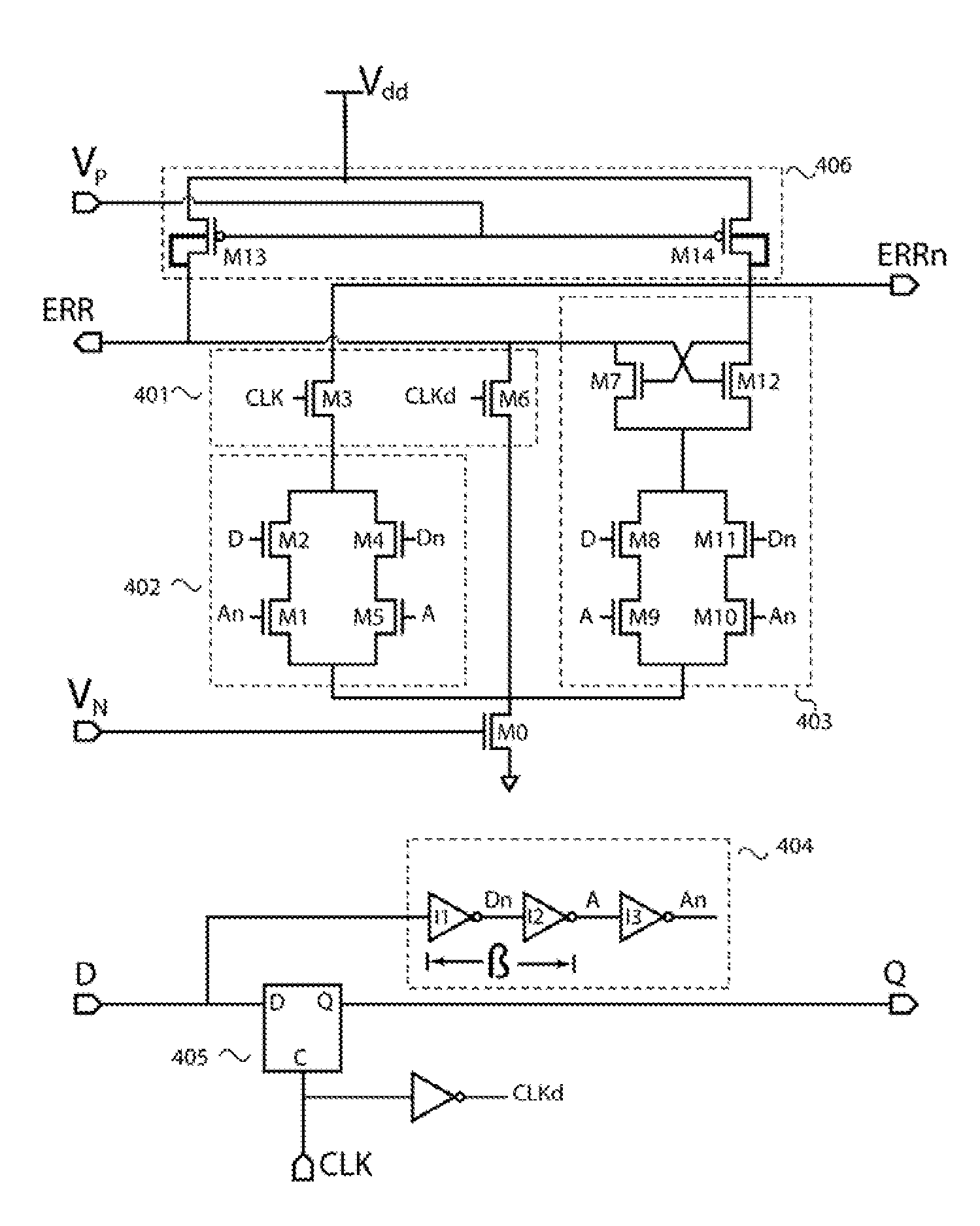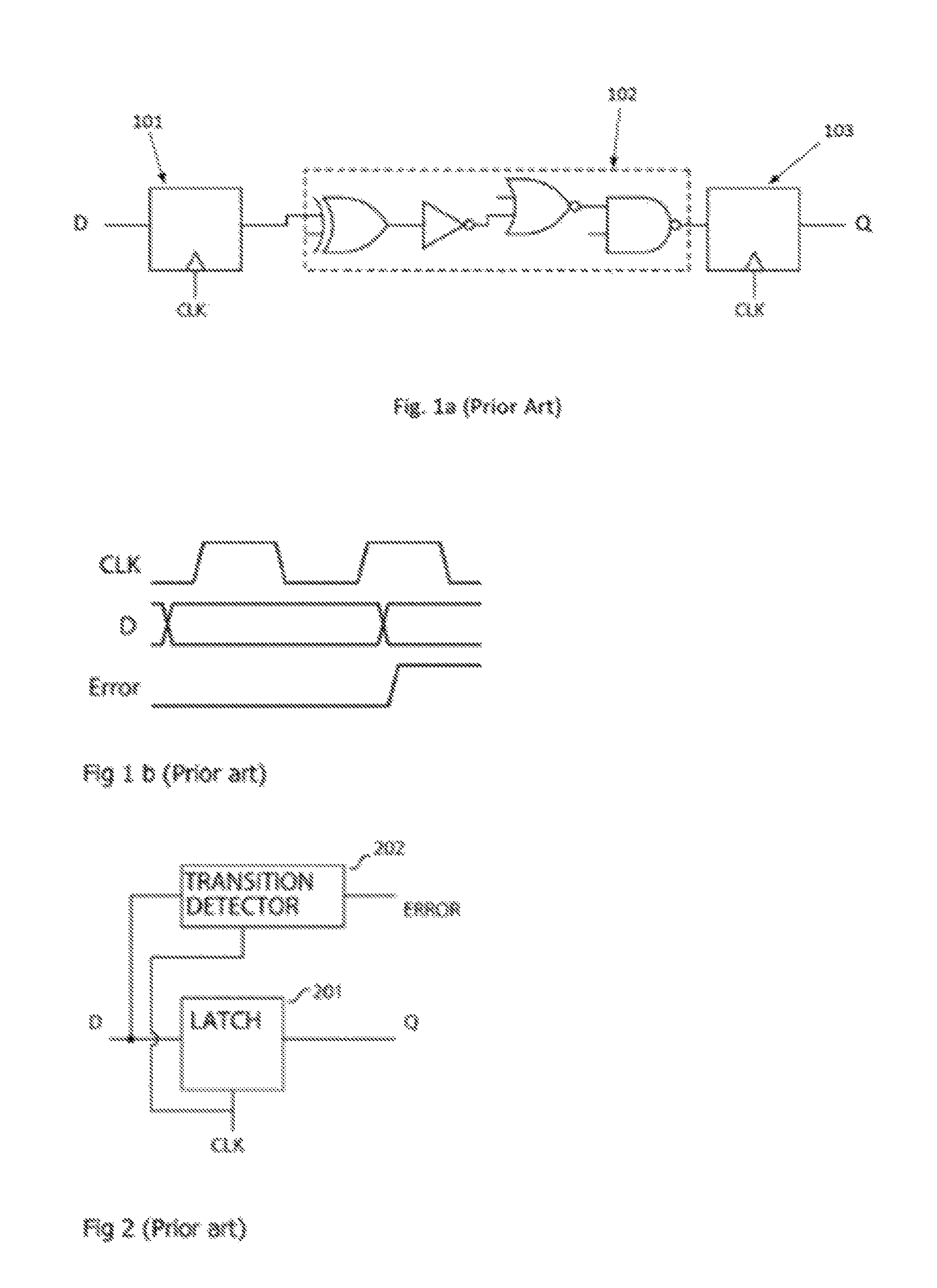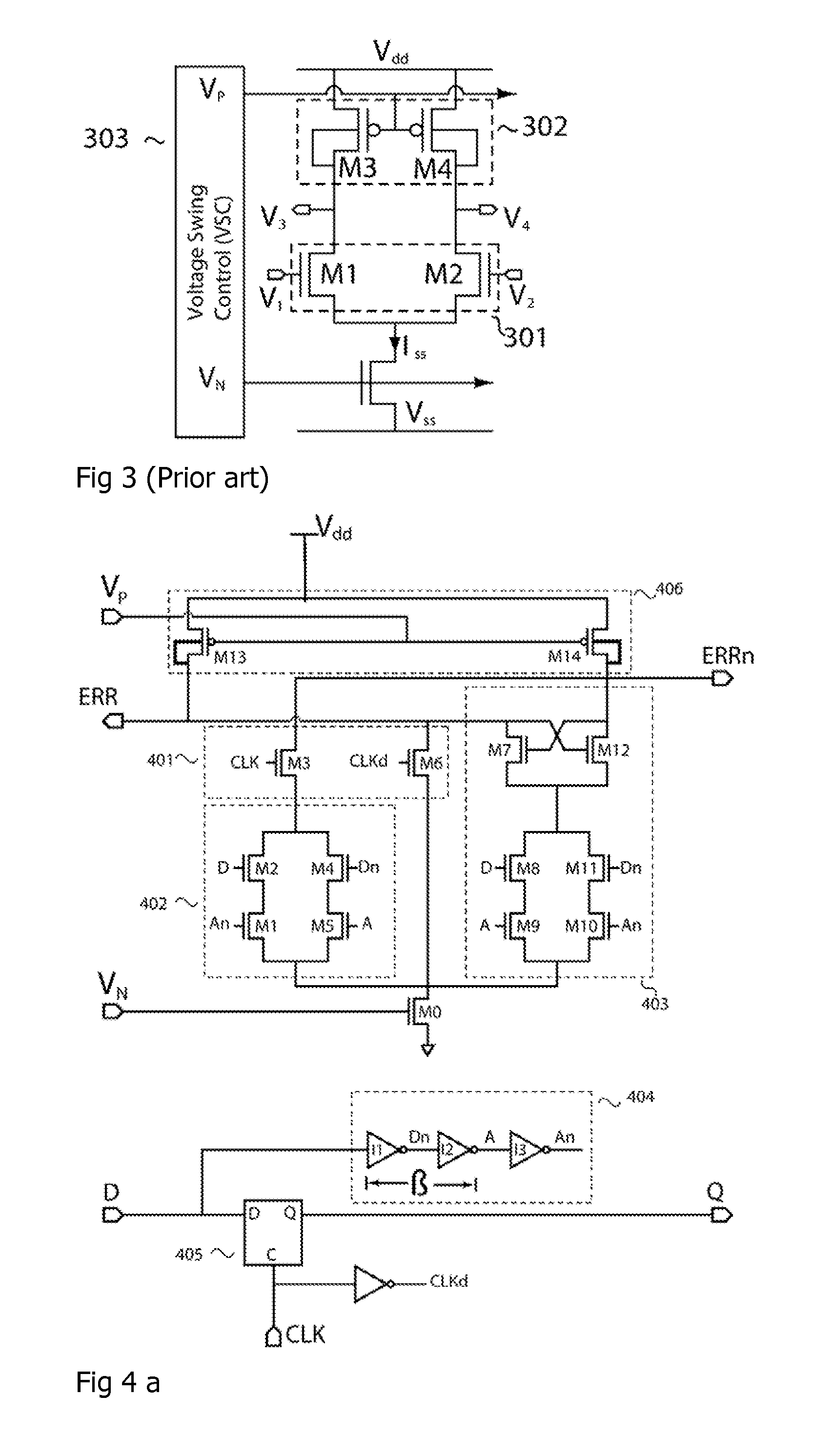Sequential circuit with current mode error detection
a current mode and circuit technology, applied in logic circuits, digital circuit testing, electric pulse generators, etc., can solve the problems of stscl to be designed by hand, modern digital design flow cad tools do not support stscl, etc., to achieve larger voltage and temperature tolerance, and reduce the effect of sensitivity to pvt variations
- Summary
- Abstract
- Description
- Claims
- Application Information
AI Technical Summary
Benefits of technology
Problems solved by technology
Method used
Image
Examples
Embodiment Construction
[0019]An embodiment of our invention, a Sequential Circuit with Current Mode Error Detection (SCCMED), is shown in FIG. 4a. This circuit, described in more detail below, may be used, for example, to replace traditional master slave flip flop circuits in the critical paths of pipelined logic. The error detection feature can then be further used to attain gain in performance, power, and / or yield. The use of current-mode avoids the power and performance penalty of using conventional circuits designed for nominal operating voltage ranges. As only the error detection is designed with current mode logic, it is simple to integrate the circuit into a static CMOS logic pipeline which has been designed with conventional CAD digital design flow.
[0020]The block diagram of the Current Mode Sequential Circuit with Error Detection is shown in FIG. 4(a). It generally consists of a current mode transition detector (401, 402, 403), a delay line (404), a sequential element such as a latch (405), a loa...
PUM
 Login to view more
Login to view more Abstract
Description
Claims
Application Information
 Login to view more
Login to view more - R&D Engineer
- R&D Manager
- IP Professional
- Industry Leading Data Capabilities
- Powerful AI technology
- Patent DNA Extraction
Browse by: Latest US Patents, China's latest patents, Technical Efficacy Thesaurus, Application Domain, Technology Topic.
© 2024 PatSnap. All rights reserved.Legal|Privacy policy|Modern Slavery Act Transparency Statement|Sitemap



